Cambridge
Audio CD player Azur

Written in the course of january to july 2008.
If you are like me, and you read on internet what's hot these days in
CD world, the Wolfson DAC is definitely a MUST HAVE gadget. This is
probably the newest DAC chip taking the industry by storm. A Scottish
origin circuit developed (so I was told) for Nokia MP3 phone playback.
The WM8740 reviewed here is a high end variant of the "telephone
DAC".
It turned out to be so good, that Hi-Fi industry adopted it
immediately. Arcam, Cambridge, NAD, Onkyo, YBA, and Rega were the early
adopters. Their players rank very high in hi-fi rags and interned
opinions.
VASILI's List of DAC chips: http://www.vasiltech.nm.ru/files/cd-players/CD-Player-DAC-Transport.htm
After seeing many players I must say that the Arcam range is by far the
most impressive. Like the Diva
CD73.
Definitely better built than the
Cambridge Azur but also at the price.
Upon inspection under the hood, Azur 640 from Cambridge (400 Euro) is
still a
fantastic piece of engineering. It shines and glitters, and in fact it
shines GOLD. The PCB design culture is one of the best there is. The
mechanism is a cheap one, but works OK. The whole player is slim, light
and simple, but it is build by people who know and love their job. I
love what I see. Namely - simple design, regulators close to power
consumers, good star grounding , few opamps in output stage, good
parts etc. And most of all - the Wolfsons.

Everything what the Cambridge has good, the Arcam has great. Not only
individual regulators for each consumer of voltage, but also individual
SECONDARIES of transformer and diode bridges. Not only the 78XX
regulators, but the best LM 3XX. Nor only good grounding, but full star
ground. Just like Ali G said - A
lillebit be-ter.
Coming back to the Azur - there are many modells in this lineup:
starting from 540-1, 540-2, 640-1, 640-2, 740 and 840.
My point is that I am NOT BUYING THE AZUR, I am buying the Wolfson so
for me the cheapest one is best. There is NOTHING that the higher
modells have better. All improvements are either marketing, visual, or
concerning the output stage which I eliminate by lampization.
Out of the box, Azur 640 MK2
is a great sounding player, it leaves behind many of stock high
end
players that I know of.
Lampization is easy because the Wolfson chips (two in this player) are
voltage output type, we just solder 3 wires and connect the Lampizator.
The result is absolutely great. The sound is so good, it left me
speechless. It walked over all my previous players, Grundig 9009
included.
It is in another league. I can not think of one area where any
other player could beat it.
The one area which stands out is bass. It has the best controlled,
tightest, cleanest bass I have ever heard in my life. For this reason
alone, all my favourite albums took a new dimension and I
listened to them in total disbelief. So much better bass, that the
whole music becomes as if recorded anew. Amazing. The rest of the
spectrum is excellent as well.
What can I say - this is the best CD playback one can have. And it is
balanced too. Even on single ended triode Lampizator with 6H6P the
sound was
mind-blowing, I can't imagine it with balanced 6H6P.
I tried the following: SRPP with 6H1P, and SRPP with 6H6P, anode
fololower triode 6H6P and cathode follower 6H6P. They give all good
results, but the SRPP with 6H6P is the one for me. It mates with the
Wolfson like match made in heaven.
Acouple of months later and couple of experiments later I think that
the Wolfson is better than Cirrus CS4397 and Burr Brown PCM1794 and the
only DAC which can touch it is the TDA1541As1 .in NOS mode and with
full tuning.

The newcomer sitting on top of the old KING.
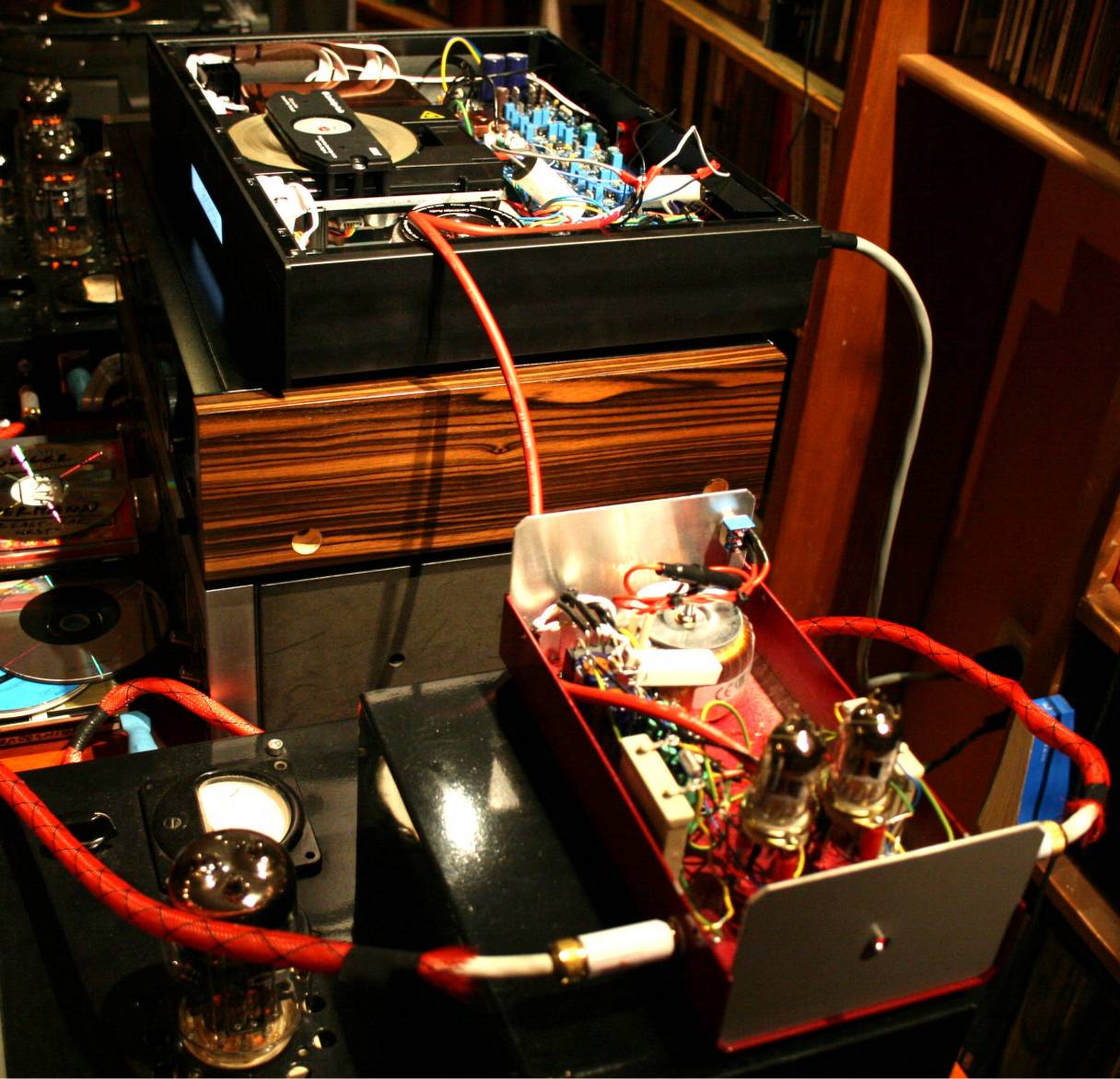
External, test - lampizator
hook-up.
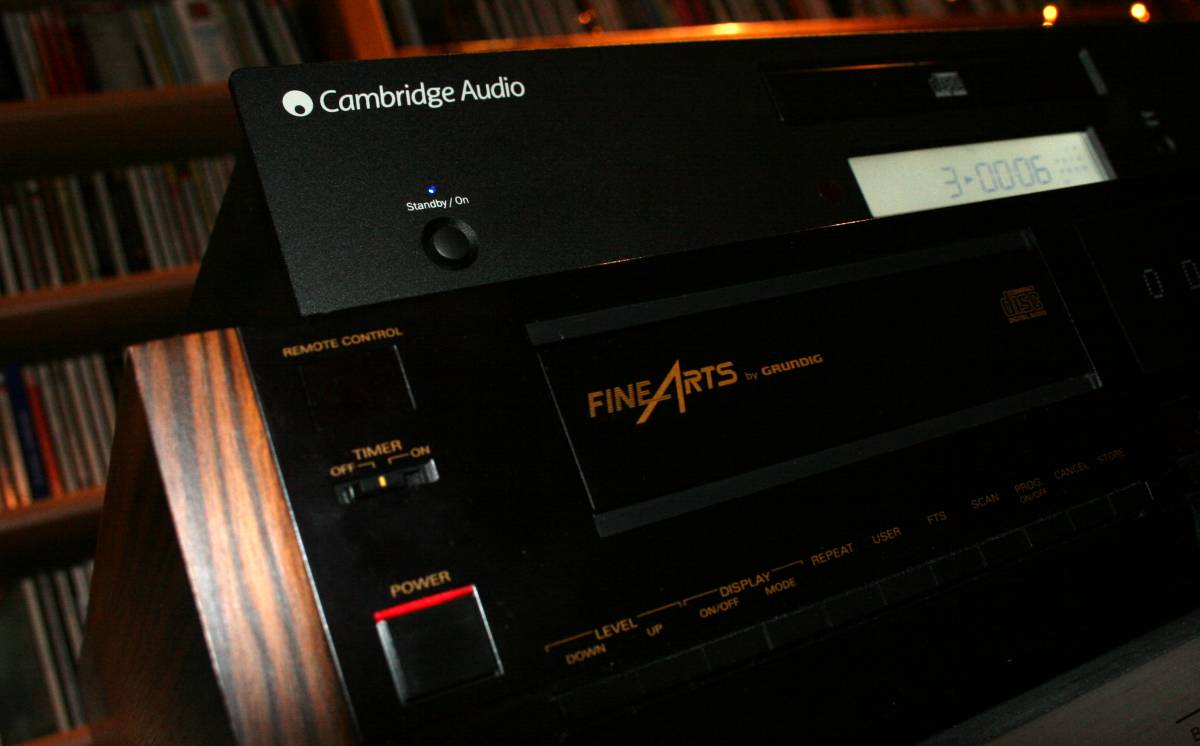

This is the right channel lampization point for stealing in the 640 MK2
A note about signal stealing:
In 640CMK2 there are two Wolfson DACS. EAch of them has 4 outputs. Each
is configured by hard pull of pin 11 to become mono.
So we can choose one of the four of the pins with output from each
Wolfson and drive the lampizator single ended. I suggest to isolate the
stealing point from the circuitry that follows it originally.

The full glory of this superplayer. MK2

Left channel lampization point. (MK2)
If you need a brand new player on a budget of few hundred Euro
(400?), look no further, buy it
and add Lampizator directly from the Uout legs of the chip (via a
quality capacitor of course). Even in stock form this is a gigantic
player, well worth every Penny, every Grosz, every Eurocent and every
Rubel.
A feature worth noticing is that the DAC, when connected raw and naked
to Lampizator, without MUTE function, makes absolutely no noise, no POP
sound on start-up, disconnection, CD read or skip function - like many
other chips do. It is silent and beautiful. You can forget about
technical issues - just play music and go to Nirvana in seconds.
DIFFERENT AZURS
The pictured
above 640C Mk2 is not necessarily the best choice.
640 MK1 has one
stereo DAC not two mono, which in my opinion is equal if we lampize it.
Only for using output summation opamps the two DAC solution is better.
The 640 C
MK1 is IDENTICAL to the 540 C MK2. So that is a
valid option as
well. Read about the 540-2 way below.
There is
also a
MK1 variant of the 640 which is simpler (one dac per
player not two) but the simpler may mean it is even better. I have both
and I prefer the older simpler cousin.
The 540 mk2
model is just as good for lampization, and the higher models
like 840 have different (worse) DAC chips. So the choice of 540 is
optimal.
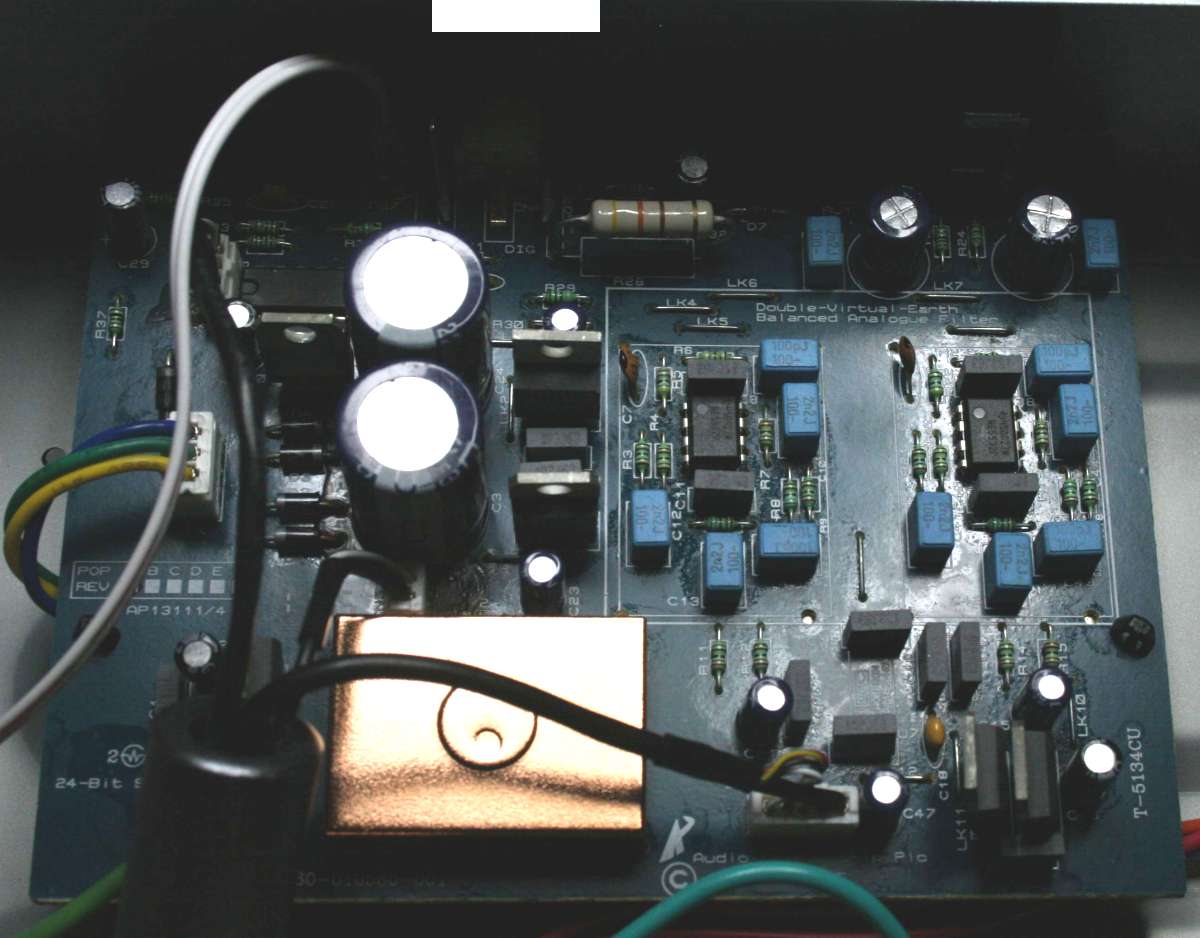
This is the 640 MK1 PCB. The wolfson is just right of the golden cup
and
underneath the PCB - on the reverse side.
The golden cup screens the clock. How good is the clock I dont know,
but it has a can, it has separate voltage regulator etc. So it is
probably good enough.
I suggest to upgrade the capacitor which supplies the clock - it is
visible left of the golden can and above the black ferrire ring. It is
one electrolyte standing near its own regulator.
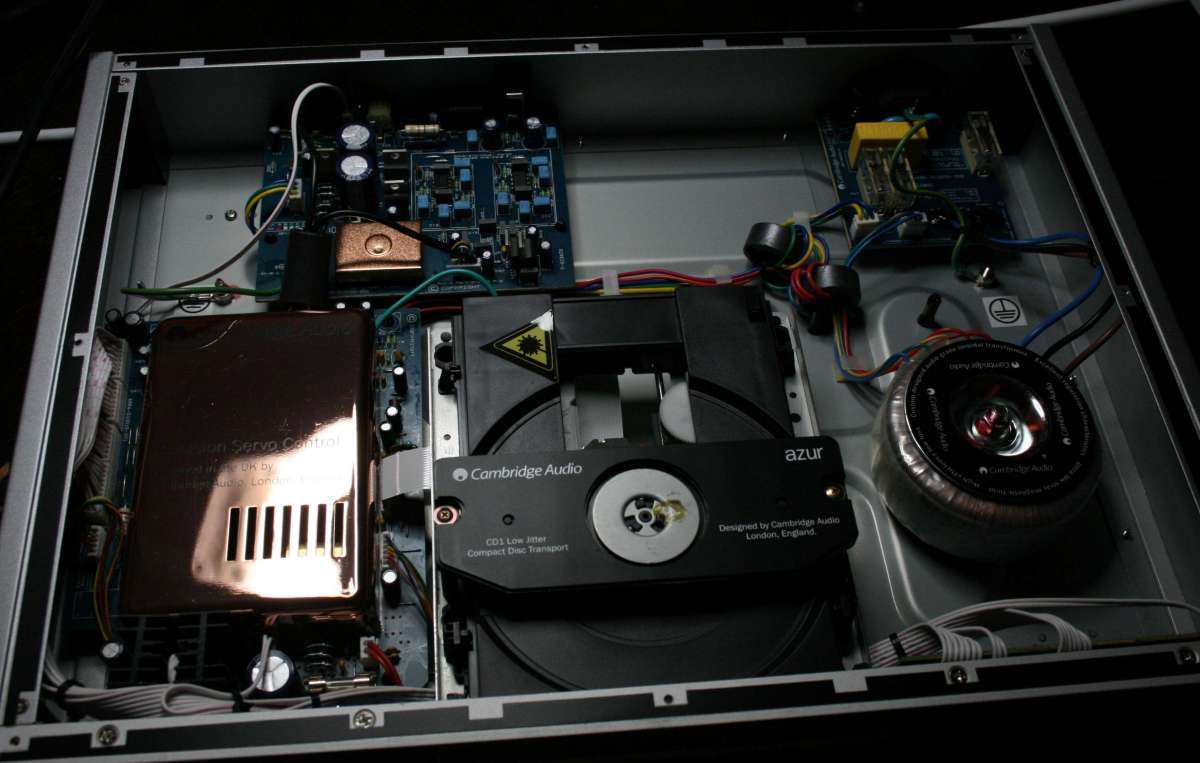
LAMPIZATION OF WOLFSON
DAC
The really good DAC chips are Iout type (meaning current output source
- meaning : high output impedance) - which after resistive
conversion to voltage - have very low and weak signal. Thats why tube
output stage is great for amplification of this signal to very strong
and powerful one.
The second variety - Uout dacs are of lower quality in NIRVANA
terms., well - almost all of them, except few really good types:
one is WOLFSON and other is Cristal (Cirrus) CS4397 and 98. And perhaps
4327, 28, 29. And of course the Philips TDA1549.
The lampizator stage makes the signal very high. Amplifiers with just a
passive pot in the input - deal with this strong signal very nicely and
respond with thunderous dynamics.
Some amps which have active inputs - may saturate.
The remedy is the cathode follower lampizator variant which has 1:1
amplification, but
the output impedance is very low (good) and available current very high
(good).
So despite that cathode follower lampizator does not amplify the signal
per se, it sounds much better than no tube at all.
The Uout DACs like Wolfson and Cristal have already output on the CD
standard level. So after lampizator with cathode follower - the level
is just perfect.
The schematics is here:
CATHODE
FOLLOWER SCHEMATICS
and
the
tube calculations - here - windows media file
With this cathode follower based on just ONE tube 6H6P - we dont need
the rectified DC heater supply - just AC is enough (easier job - just
wire AC 6,3 V and all is ok. The cathode followers don't hum !
This sytem sounds absolutely pure, clean, powerful, extended - all we
can ask for.
I also recommend this capacitor source for Obbligato PIO capacitors
http://www.diyhifisupply.com/diyhs_ob_caps.htm

THE KING OF DAC CHIPS (black arrows point to left and right signal
outputs for lampizator. Legs 12 and 17. It can also be balanced - with
XLR outputs. Wolfson is internally ballanced and has 4 outputs.
Red circles show where the resistors on the other side of PCB has been
removed for isolating the stealing point from everything else. It is
not necessary but advisable. So the arrows point at the points wrom
which signal will go to tube inputs (grids) via a capacitor. Any MKP
cap bigger than 220nF and V rating is unimportant.

Back wall prepared for tubes. In the two tube SRPP lampizator I decided
to stick tubes out. In single tube variant it can be mounted insicde.
Heat will not be an issue.

Ready tube arrangement.

The only passive components which need an upgrade - the 3 caps powering
the DAC chip. The red marks point to my newly installed oscons.. 6,3 V
rating is enough.
I used 330 uF/6,3 The red arrow shows the 7805 regulator which powers
the DAC. The only improvement I can think of would be to put a small
ferrite core coil between regulator and capacitors to isolate small
noises.

The smaller transformer is from me.
Unfortunately the AC power can not be taken from a switched point. The
AC must be always present in the lampizator transformer or you must add
a new switch for disconnecting AC on the back wall of the player. I
decided to keep tubes warm. In the 540C-2 there is additional
switch there which solves the problem.
The 640 Player switches power on secondaries of their trafo.

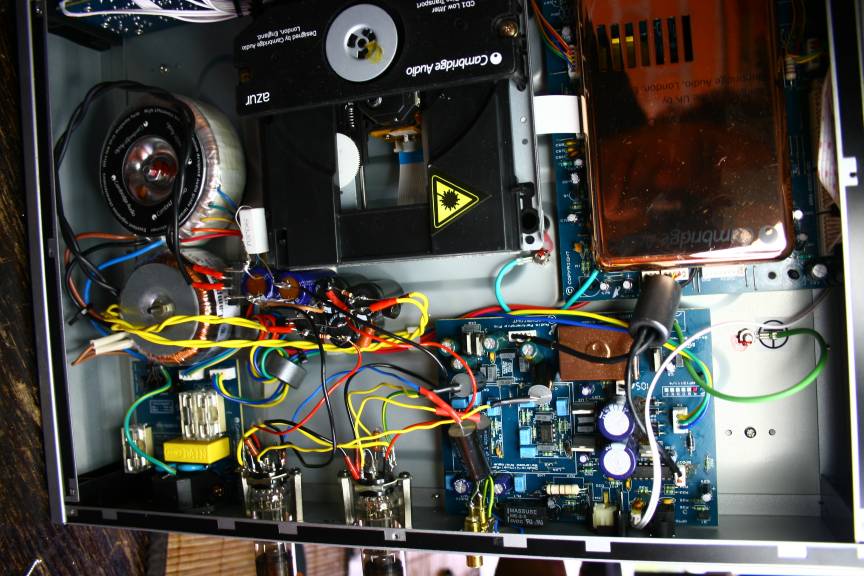
The general look of fully lampized 640 MK1 player with 6H6P tubes. The
resistors of cathodes of tubes in SRPP lampizator mode are 250 Ohms.

Red circles show my
MKP caps which are soldered standing vertically in the holes left after
I removed the first resistor after the DAC output.
The Azur 540C MK2

The PCB design date is week 30 of 2005.
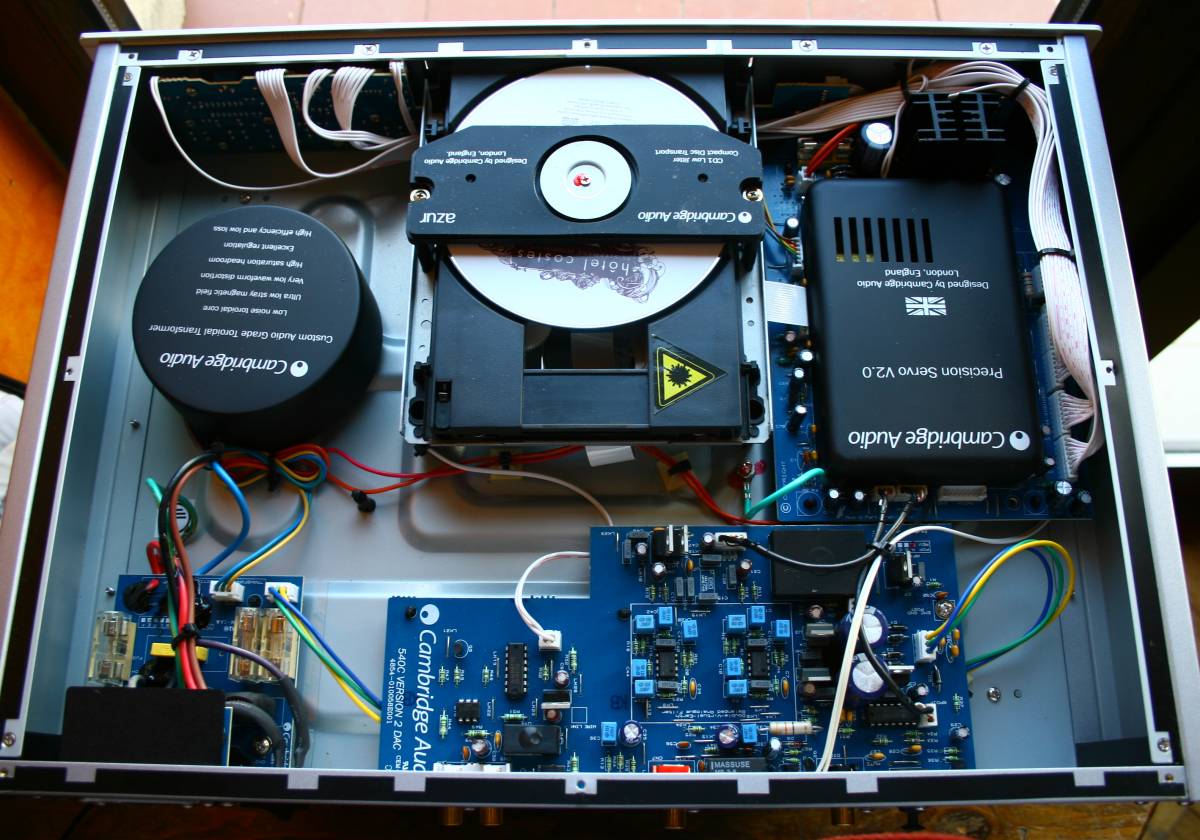
The player looks identical to 640 MK1 except the shelding cans are
black, not golden. Who cares anyway.

There is a lot of BS on the plastic can covering the toroidal
transformer. It is not rocket science, it is just a well made
transformer.

Frankly, I have no idea what really sits inside this can. I guess - a
properly executed servo. Nothing more nothing less.

As we see here the mechanism is no longer a SONY, it is a chinese no
name mechanism a'la Sony 201 or 213. Still it plays well.

here you see the AC power stealing points for lampizator. Switchable by
the main power switch at the back.

These are the signal stealing points for lampizator. The rest of the
circuit is disabled. I cut off the power supplies of the opamps by
razor blade. And I lifted the resistors leading from these signal
points to the next circuitry to avoid signal degradation.
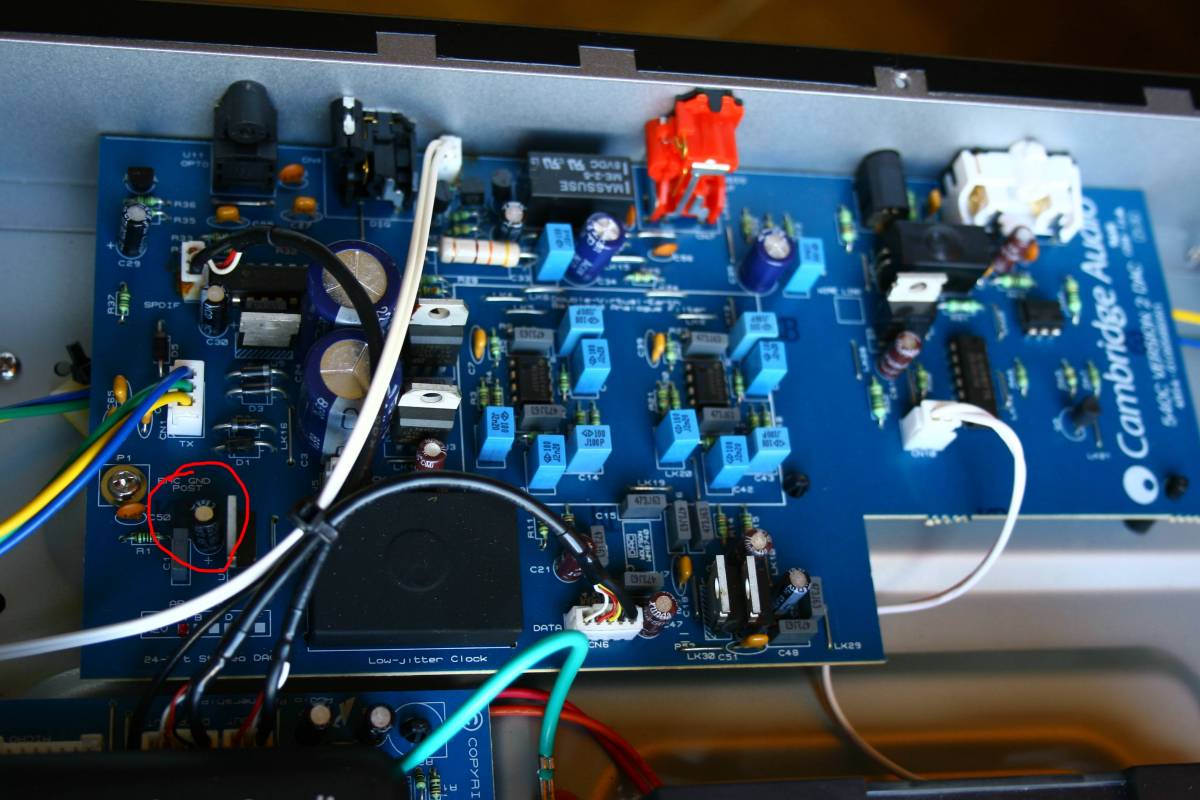
The capacitor and regulator in the red circle as above are
feeding the clock
under the black small can. I upgraded the clock cap with the os-con.
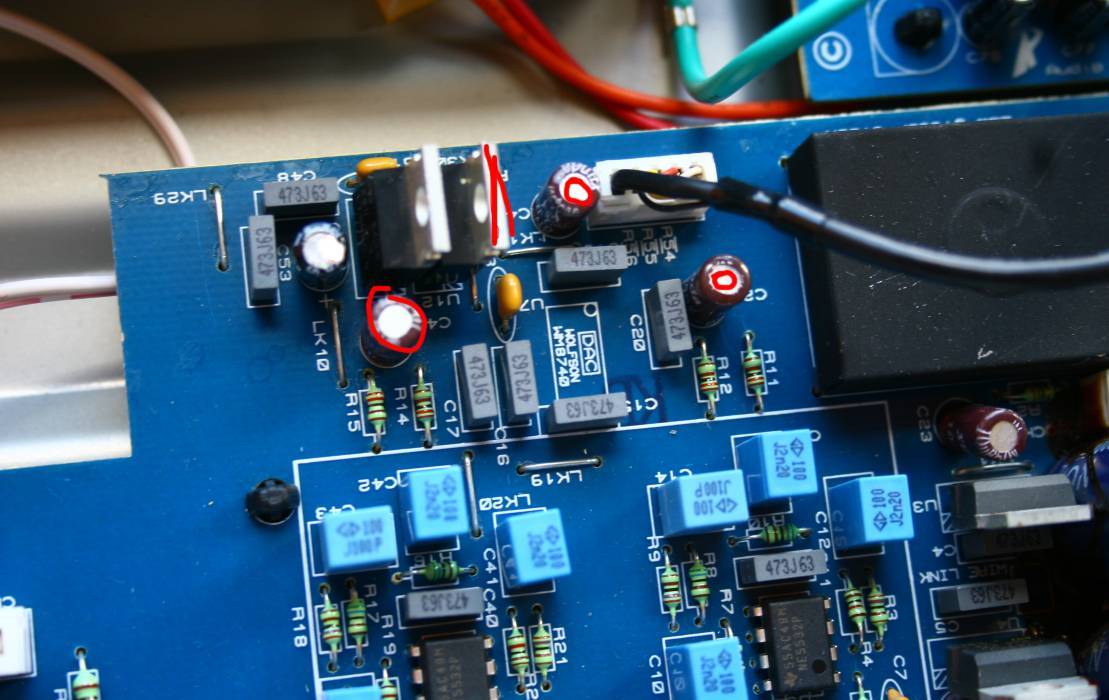
The parts marked
with red marks are three caps and regulator feeding
5VDC to the DAC. I upgraded 3 caps with oscons - 330uF by 6,3 V.

The oscons
already in place.

The under-side
of the whole PCB.
The right hand
section is for external remote controll and system info
bus. I disabled power to this whole section. It is useless for me.

This is the
lampizator socket - I decided to use one tube in stereo
triode fashion.. I used 6H6P ideal for this DAC.
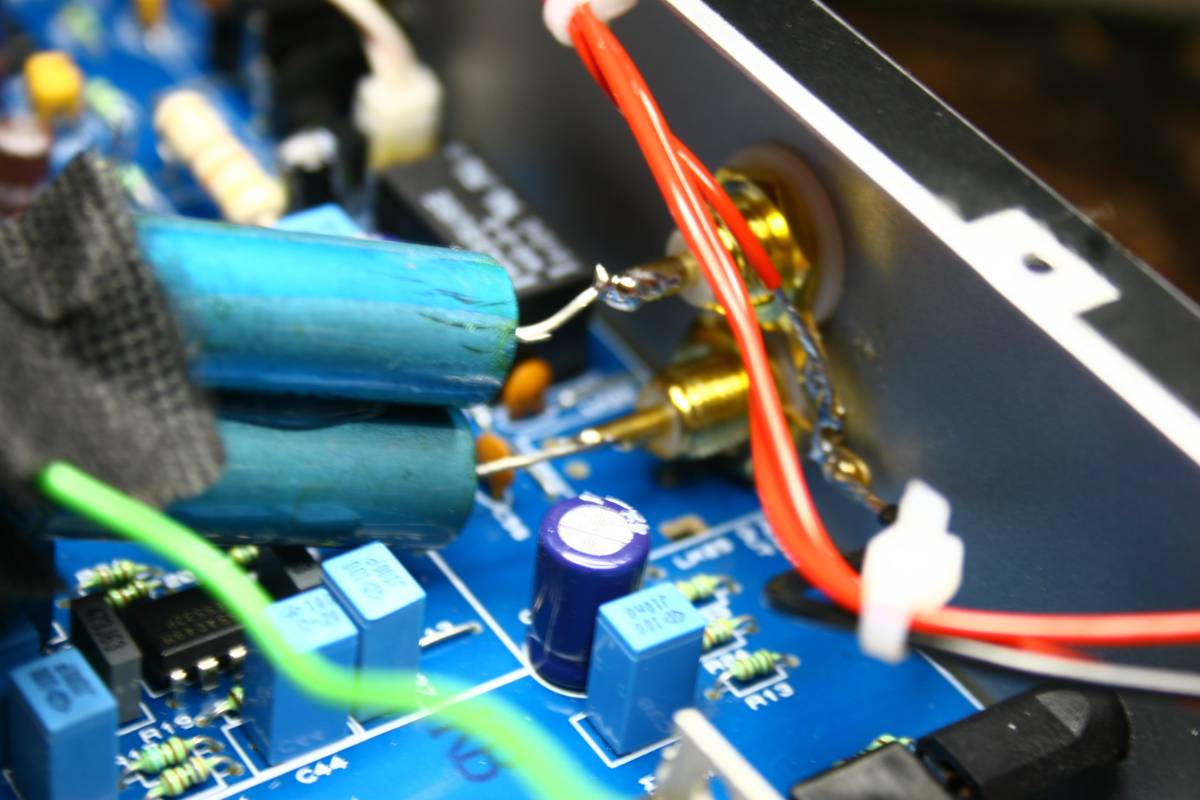
These are output
caps blocking the 100 VDC from the tube. RCA sockets
are newly installed by me in place of the old crappy ones.

This is the
anode supply high voltage section. 1000 uF at the input and
2 x 220 UF by 200 V at the stereo outputs.
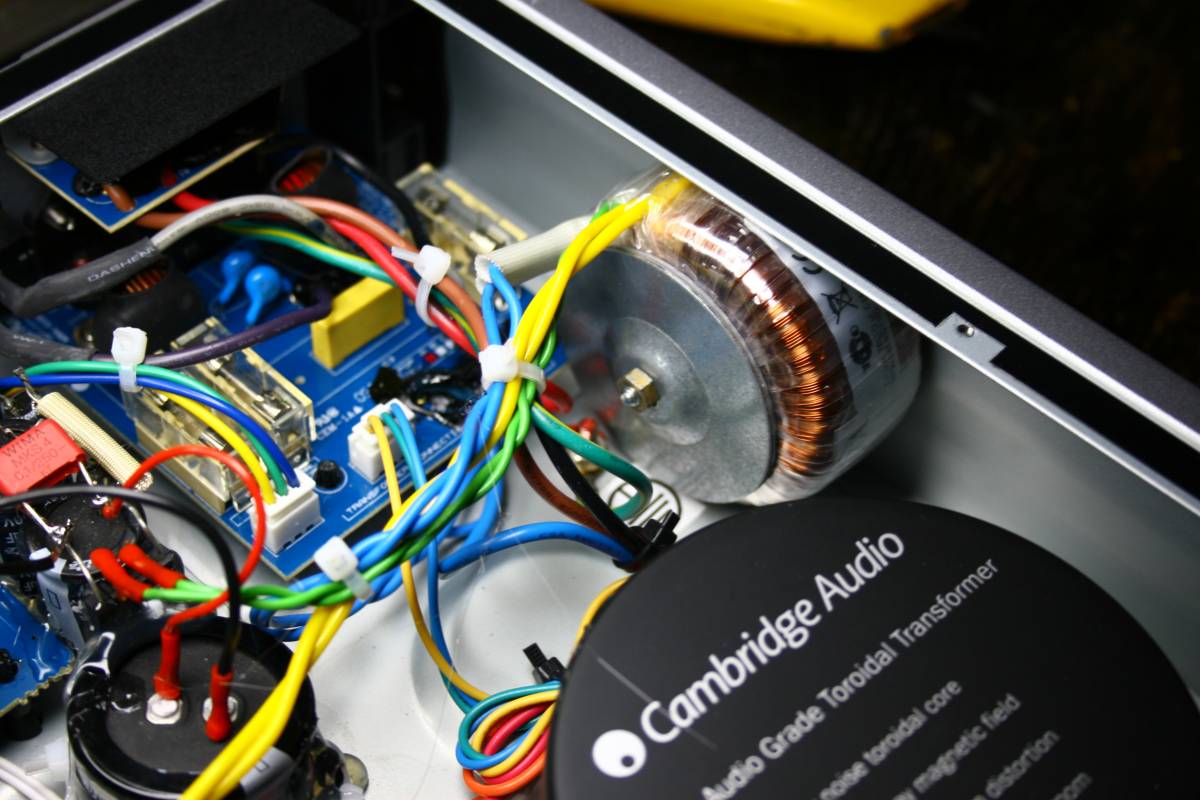
My transformer
just fitted nicely on the side wall.
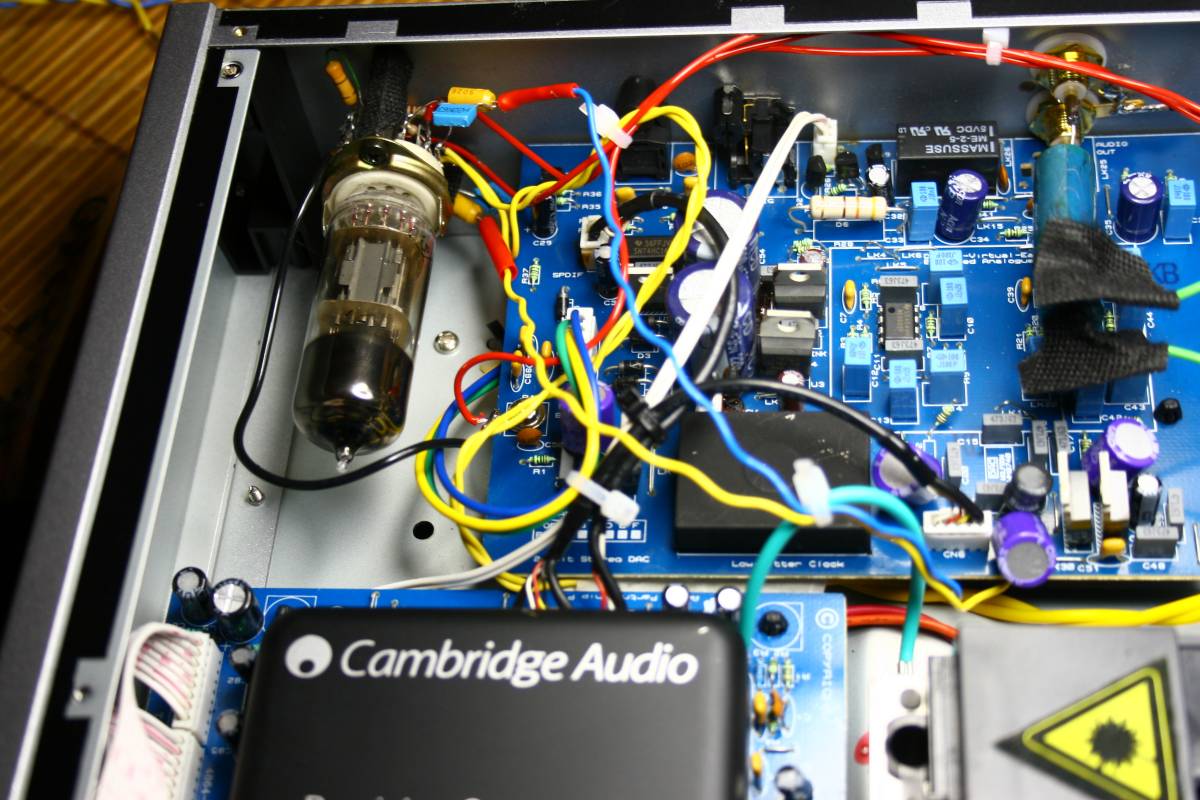
he whole job and
the output tube
visible.
The sound
quality is breathtaking. It is so good that you must listen
to it and I can not explain how great it sounds. Class A+ with a bullet.
For the asking
price of the new player - 250 Euro, plus some 50 extra
for lampizator, we get a world class player that will beat any player
in
stock form regardless of the price. No kidding. Just try it !
BACK

































